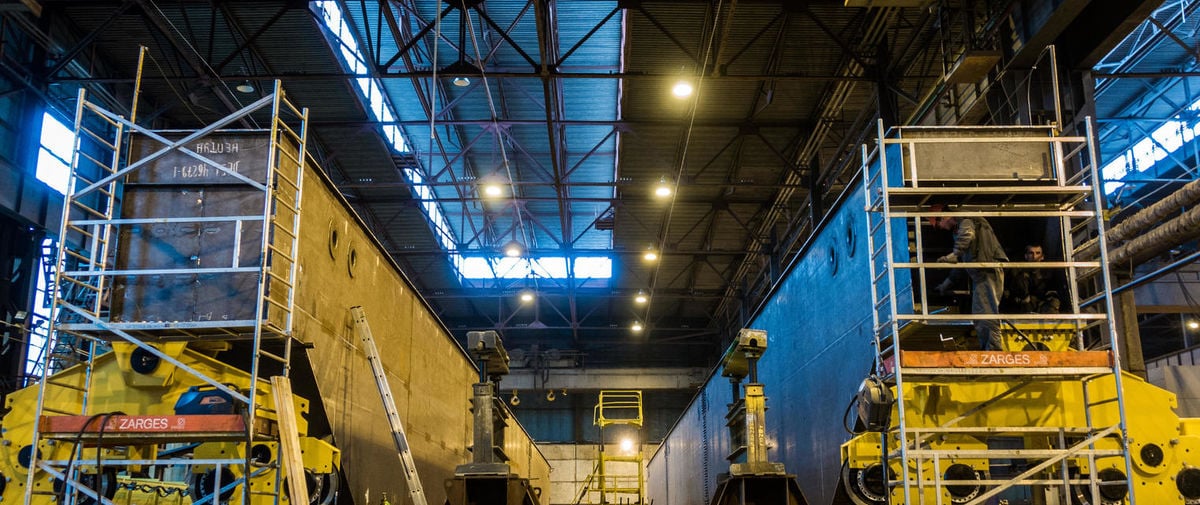Konecranes has reached its energy intensity reduction target considerably ahead of schedule. The original aim was to improve energy efficiency intensity (MWh/sales) by ten percent between 2013 and 2020. Konecranes achieved this goal by 2016.
“Konecranes continuously aims to improve energy and resource efficiency. The reduction of energy consumption intensity is one of our strategic initiatives regarding environmental responsibility and linked to our value of sustained profitability. That’s why we’re thrilled to report that real improvements have already been accomplished,” says Lisa Jackson, Safety and Environmental Specialist at Konecranes.
“In addition to saving natural resources and reducing pollution, energy efficiency provides us with productivity improvements and monetary gains,” she notes. “Even though the targets have already been achieved, the energy efficiency work continues, and new targets will be set.”
Even though the targets have already been achieved, the energy efficiency work continues, and new targets will be set.
“Since 2013, more than 40 energy-efficiency projects have been reported: investments in heat recovery, insulation and lighting, as well as projects related to behavioral change and fuel-efficient driving,” Jackson says. “One great example is our factory in Jejuri, India, where solar panels were installed on the factory roof. According to estimates, the solar panels will cover 67% of the factory’s energy needs, reducing its carbon footprint by approximately 1,100 CO2e tons (ie. 67%) annually.”
Increased insulation and lighting efficiency in Zaporozhye
In addition, action has been taken in the Zaporozhye factory in the Ukraine to save electricity and reduce heat losses.
“During this year, we have reduced heat losses by installing 29 new windows and insulating walls in the administrative building and in part of the factory,” says Marina Morskaya, Head Ecologist at PJSC Zaporozhcran. Next year, we aim to further reduce heat losses by replacing more windows, as well as the gate in the components production facility.
Further savings in electricity are also planned. “Mercury lamps are gradually being replaced with LED lamps in production and office premises. To save electricity and reduce the loss of compressed air, we are planning to install a control system for the supply compressed air system,” Morskaya continues.
Results through engagement in Hämeenlinna
As for Finland, the Hämeenlinna factory has been striving to decrease energy consumption through continuous monitoring and employee engagement.
“We have measured our energy consumption since 2012 and managed to decrease our energy use year after year,” says Harri Ylä-Soininmäki, Safety and Environmental Manager at Konecranes Hämeenlinna. “Nowadays we consume approximately 2,000 MWh less energy yearly in Hämeenlinna. That is 20% less energy compared to 2012. Here in cold Finland, one detached house uses 20,000 kWh energy in a year, so with that 2,000 MWh we could warm up 100 houses.”
It is very important that all personnel take part in environmental matters. In fact, often the best ideas come from employees.
“Much of the actual environmental work is just little things like turning off the main power when a machine is not needed. However, even the biggest investments, like changing the old factory lights to new, brighter LED lights, installing heat recovery systems and changing the factory doors to quicker, more energy efficient ones, have paid off rather quickly,” Ylä-Soininmäki explains.
“Taking care of the environment is an integral part of the culture at the Hämeenlinna factory, and we constantly try to make our culture even better and increase our environmental awareness. For example, we give environmental training to all personnel – summer trainees and subcontractors included – and encourage them to make environmental observations. Each observation is a ticket in our monthly lottery,” Ylä-Soininmäki says. “It is very important that all personnel take part in environmental matters. In fact, often the best ideas come from employees,” he concludes.
Text: Anna Hiltunen
Photo: Konecranes
